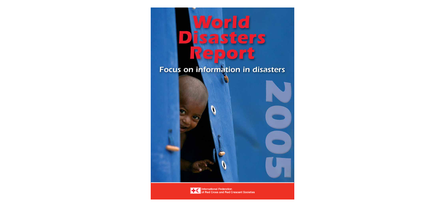
Today’s technology and resources for international disaster response have opened up new possibilities for gathering and giving information. Newcomers can quickly get an overview of the disaster zone by helicopter surveys. They can find the history and context from a quick trawl on the Internet. But is this progress? Does it reveal the truth? What vital information is left out?
Local organizations are likely to have a good understanding of disaster-affected people but, because they lack access to helicopters, their perceptions may be devalued or come too late to influence the critical early decisions of international organizations. If relief agencies rely on technology, the Internet or the media, will they ignore processes of participation and consultation?
This year’s World Disasters Report considers the quality of communication that takes place between those involved and what impact it has on people caught up in crisis. The theme may sound abstract, but it has very tangible implications. The right kind of information leads to a deeper understanding of needs and ways to meet those needs. The wrong information can lead to inappropriate, even dangerous interventions.